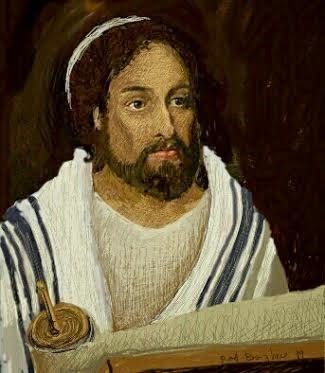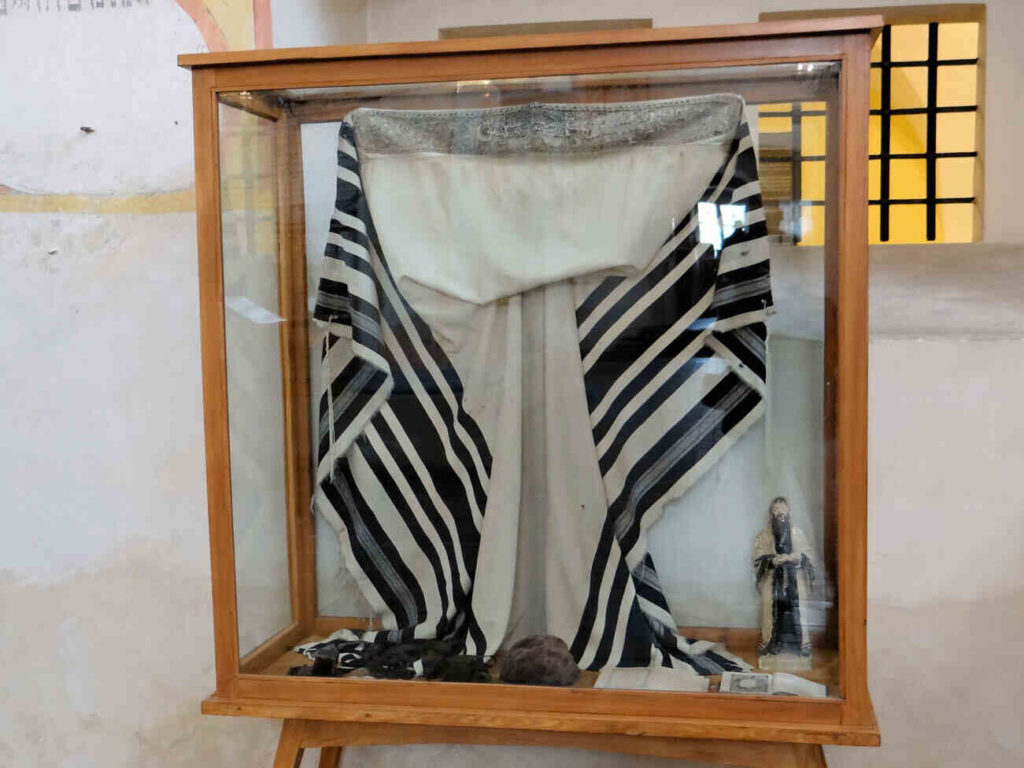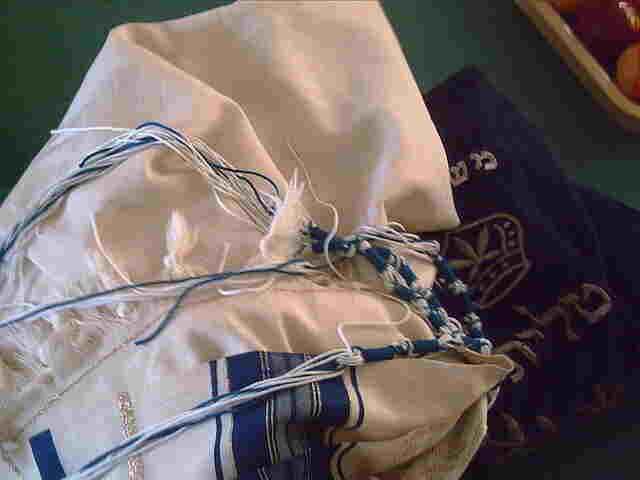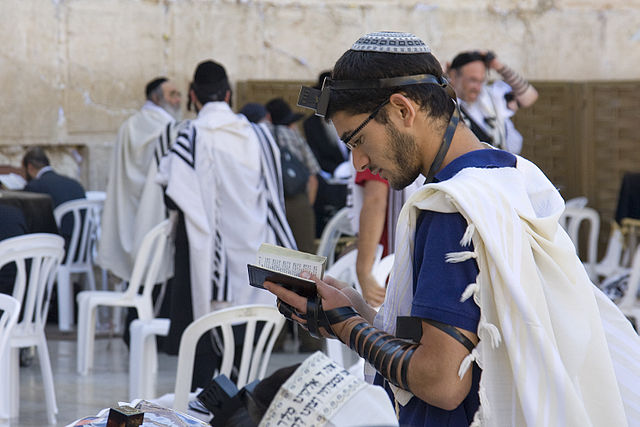Judaism: A Fringe Religion
How were Jesus’ values apparent in His clothing?
Many of us have an incorrect image of Jesus like this in our mind,
But in reality He would have looked much more like this,

The blue striped clothing over His shirt is a prayer shawl, a “Tallit”.
The edges of the Tallit are called “Kanaph” in Hebrew meaning “wing”.
This is how it used in the Psalms,
“Keep me as the apple of Your eye; Hide me under the shadow of Your wings”.
(Psalm 17:8)
Also in Ruth 2:12,
“The Lord repay your work, and a full reward be given you by the Lord God of Israel, under whose wings you have come for refuge.”
Here, when we are under His wings we are in His care and under His protection. The tallit is sometimes called a “arba kanfot” which means four wings.

The Importance of Blue
Even the color of Jesus’ tallit tells us about His values.
In the ancient world blue dye was rarer than any other. It could only be derived from the Murex snail, found at the bottom of the Mediterranean Sea.
It took 9,000 snails to produce just one gram of the dye.
Only Kings, Queens and the wealthiest nobility could afford to have blue or purple clothing. It was the ultimate symbol of earthly riches, often worth twenty times their weight in gold.
But for the Jews, God commanded it be used for a greater purpose.
Dye from the Murex snail was used in the garments of the high priests as well as the curtains and coverings of the Tabernacle.
The snail was thought to be extinct from 600 AD-1800 AD but the species has returned to Israel’s coast. Now Jews around the world can show their love of God by wearing the blue tallit in synagogues today.

Tzitzit
God’s commandments regarding the tallit did not end there.
The Jewish people were commanded to wear tzitzitiot on the four corners of their garments. The instruction came directly from God:
“And the Lord spoke unto Moses, saying, Speak unto the children of Israel, and bid them that they make them fringes in the borders of their garments throughout their generations, and that they put upon the fringe of the borders a ribband of blue: And it shall be unto you for a fringe, that ye may look upon it, and remember all the commandments of the Lord, and do them; and that ye seek not after your own heart and your own eyes, after which ye use to go a whoring: That ye may remember, and do all my commandments, and be holy unto your God. I am the Lord your God, which brought you out of the land of Egypt, to be your God: I am the Lord your God.”
(Numbers 15:37 – 41)
The purpose of such a commandment, as given by these verses, is so that the people of Israel should glance at the tassels and remember all of the commandments of God. These commandments form a moral and ethical code in the Torah and were one of the distinct features of ancient Israel which set it apart from all other nations. The tassels were in plain view for all to see, including the wearer, as a constant reminder to walk (Hebrew – halachah) in unison with God’s instructions.
Even the spelling of “Tallit” and “Tzizit” are significant. In ancient Hebrew letters were used for numbers, so the first letter, Aleph, was also the number one, Bet was the number two and so on.
When you combine the numerical value for “Tallit” with the eight strings and five knots of each tassel the total is 613 – the exact number of Commandments in the Torah.
So, when a Jew wears the tallit, symbolically, he is wearing God’s Commandments, he is covering his body and life in God’s protection.

The Hem of His Garment
“And suddenly, a woman who had a flow of blood for twelve years came from behind and touched the hem of His garment.”
(Matthew 9:20)
Her condition had caused her a great deal of physical and emotional suffering.
Why did the woman from Galilee seek healing by touching the hem of Jesus’ garment?
You can not understand, unless you understand Jesus’ Judaism.
We might think it was just a case of her wanting to be as close to Him as she could but her intentions were much clearer than that. She didn’t want to touch just any piece of His clothing, she wanted to touch His “Tallit”.
In Leviticus we read,
“If a woman has a discharge of blood for many days, other than at the time of her customary impurity, or if it runs beyond her usual time of impurity, all the days of her unclean discharge shall be as the days of her customary impurity. She shall be unclean”. (Lev 15: 25)
As a result of this ailment, she was a social outcast because everyone who would have had contact with her would have also been considered ritually unclean. Everyone, in this case, including Jesus. Anything she touched, the bed she laid in, the chair she sat in, became unclean. A person who touched any of these things became unclean as well. The Torah admonished any such person to clean their clothing and bathe their body in water and by evening become clean.
She endured this condition for twelve years continuously!
For many years she endured this condition, many times seeking medical help.
“Now a woman, having a flow of blood for twelve years, had spent all her livelihood on physicians and could not be healed by any.”
(Luke 8:43)”
But even so, she had faith,
“[she] came from behind and touched the border of His garment. And immediately her flow of blood stopped.”
(Luke 8:44)
Specifically, she sought to grab hold of Jesus’ “wings”. Many Jews at the time believed the Messiah would come soon, and heeded the words of Malachi,
“But to you who fear My name The Sun of Righteousness shall arise with healing in His wings”. (Malachi 4:2)
Matthew confirms this is what she sought to do,
“And when the men of that place had knowledge of Him, they sent out into all that country round about, and brought unto him all that were diseased; And besought him that they might only touch the hem of his garment [kanaph]: and as many as touched were made perfectly whole.” Matthew 14:35 – 36
The garment, of course, possessed no magical powers.
The power rested in God’s response to the people’s faith. They had reached out to Jesus’ tzizit which was symbolic of His authority He possessed as God’s Son.


